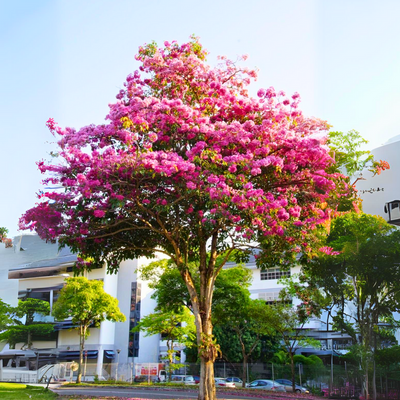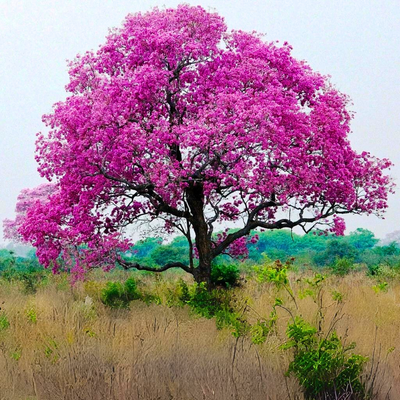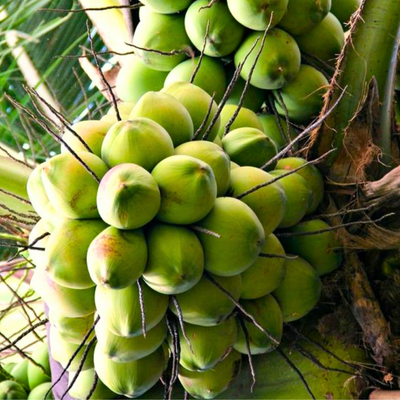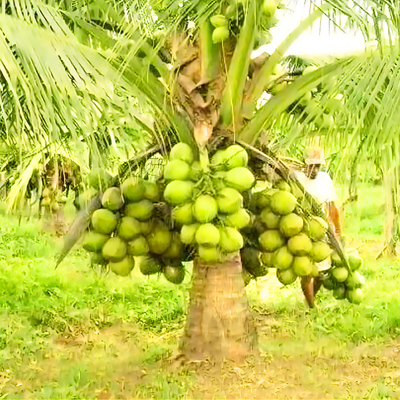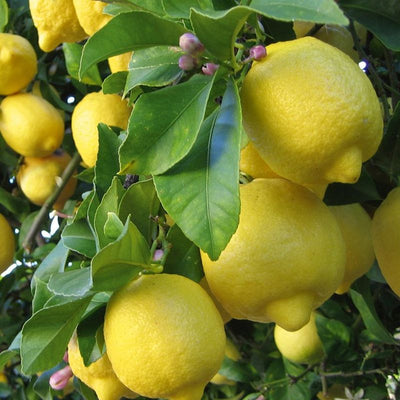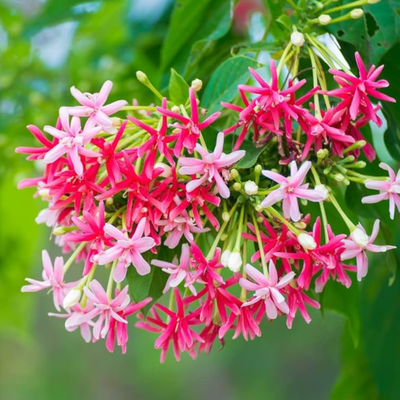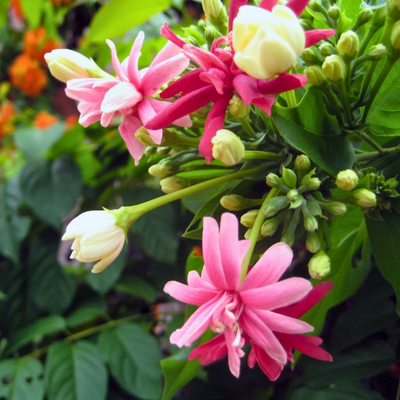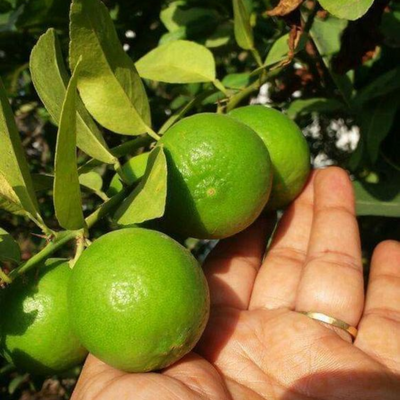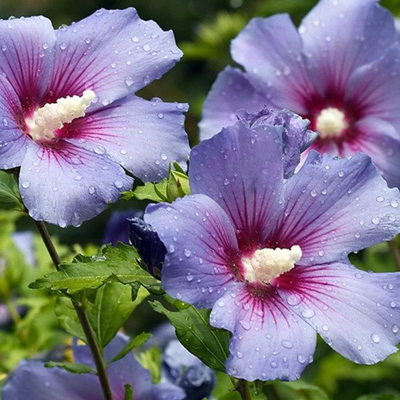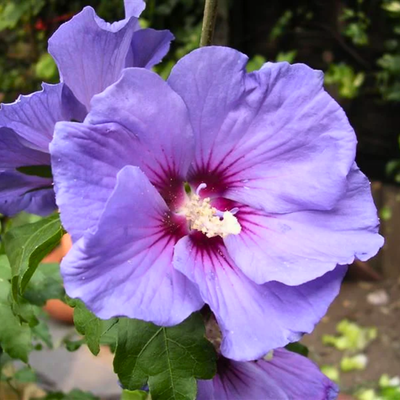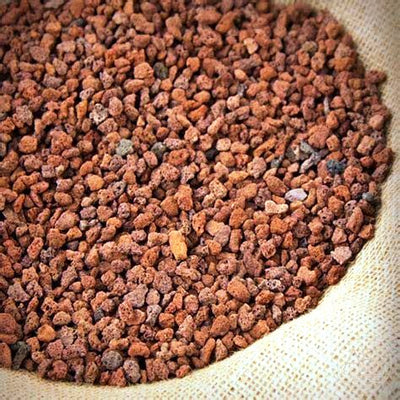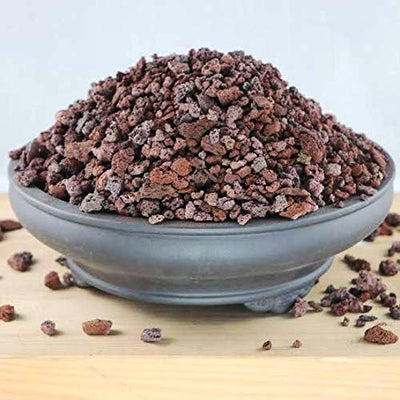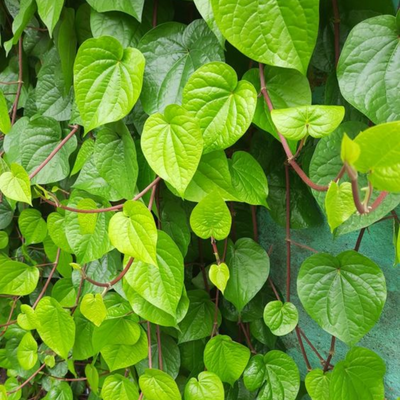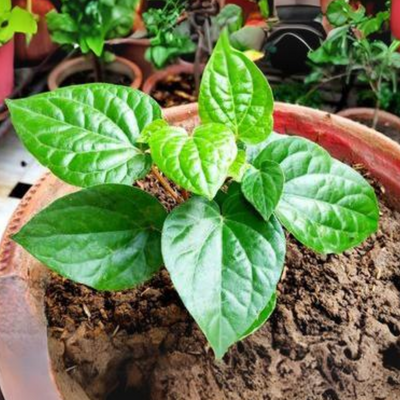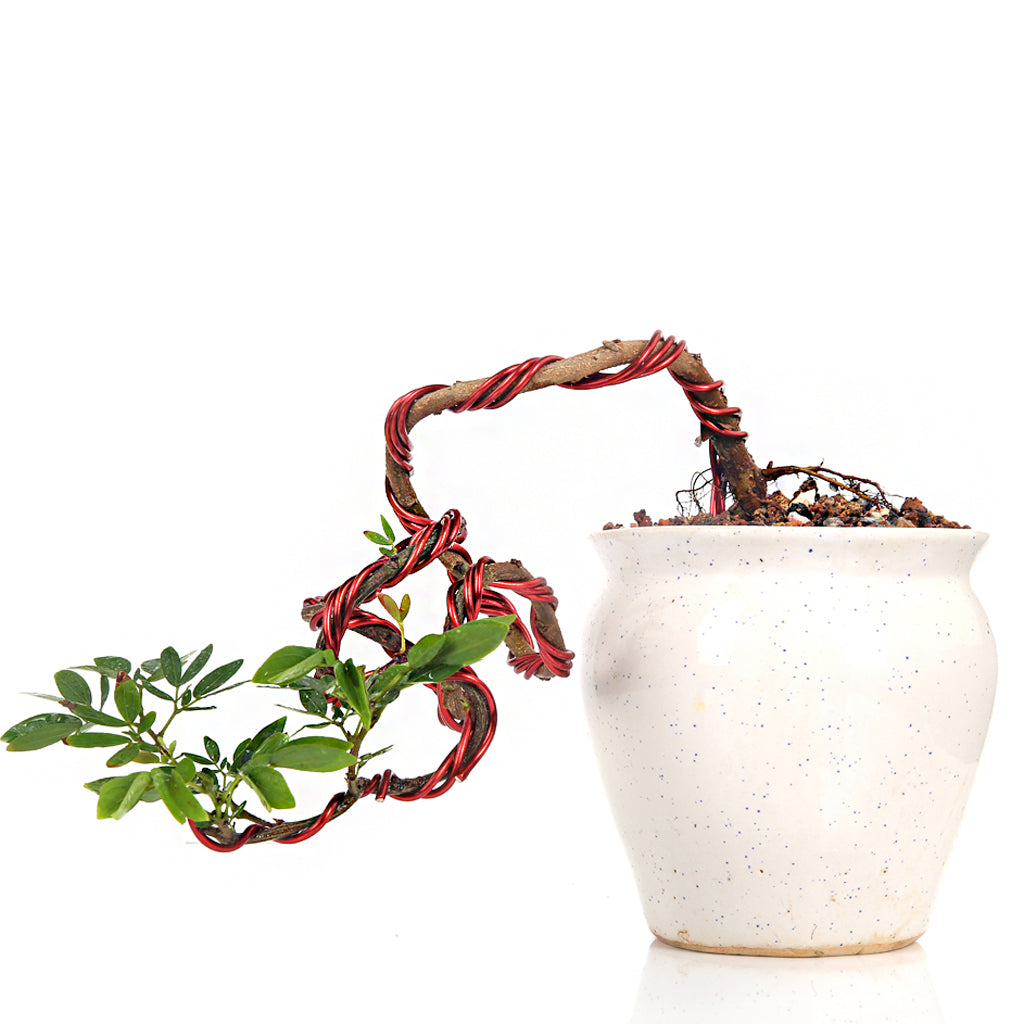
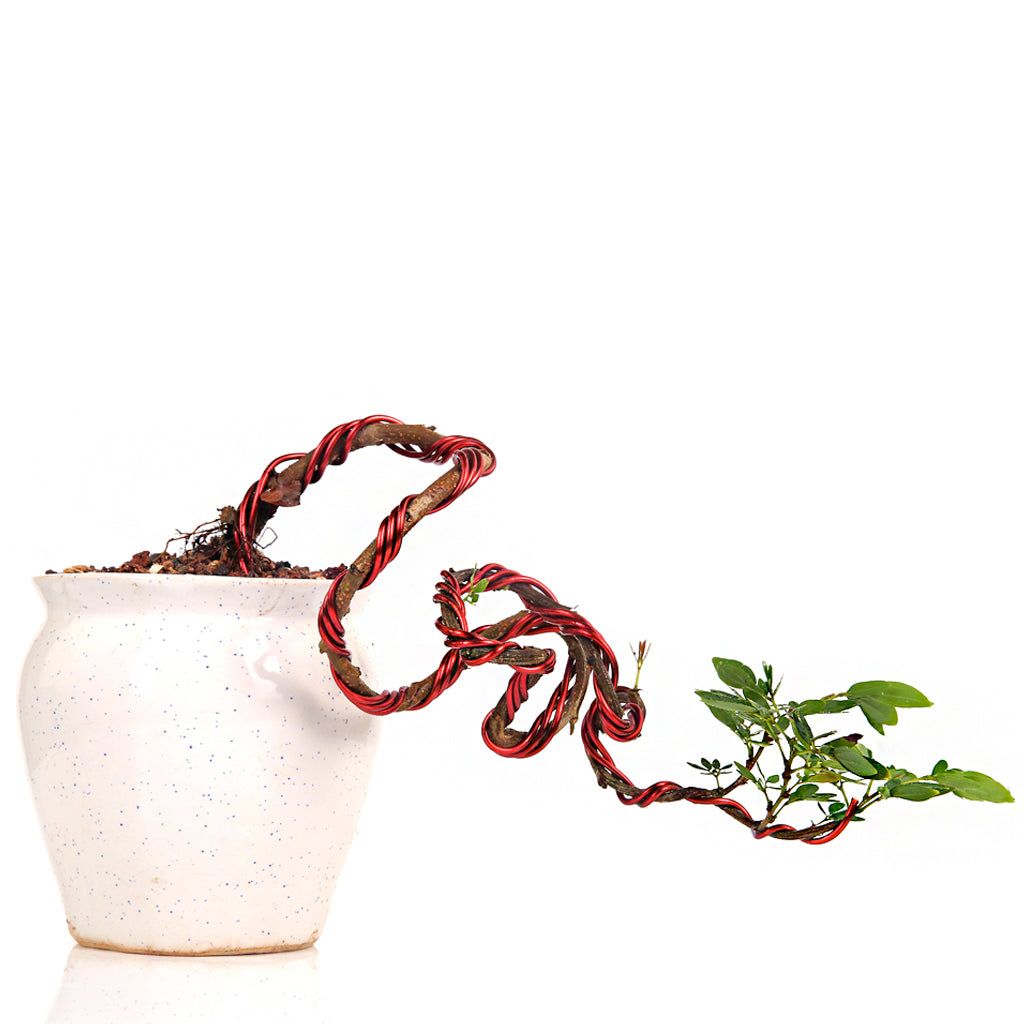
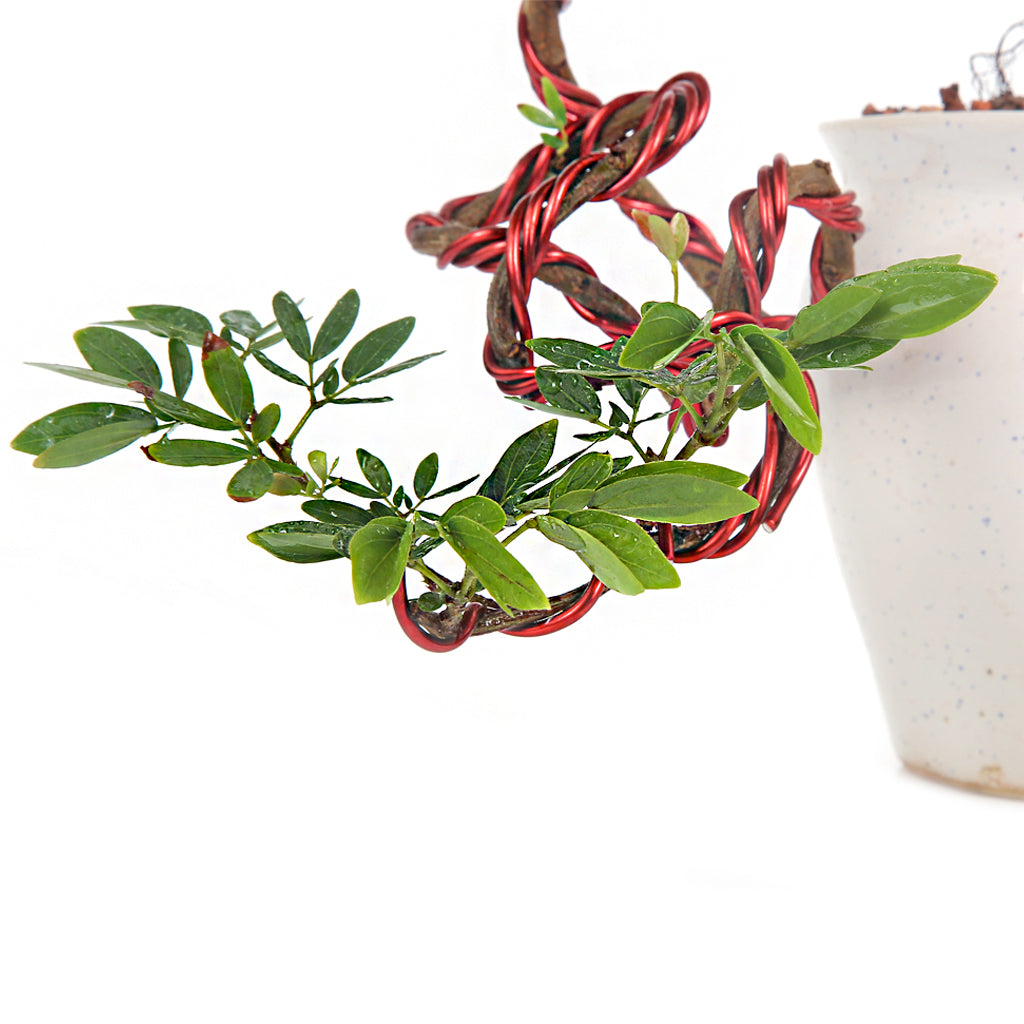
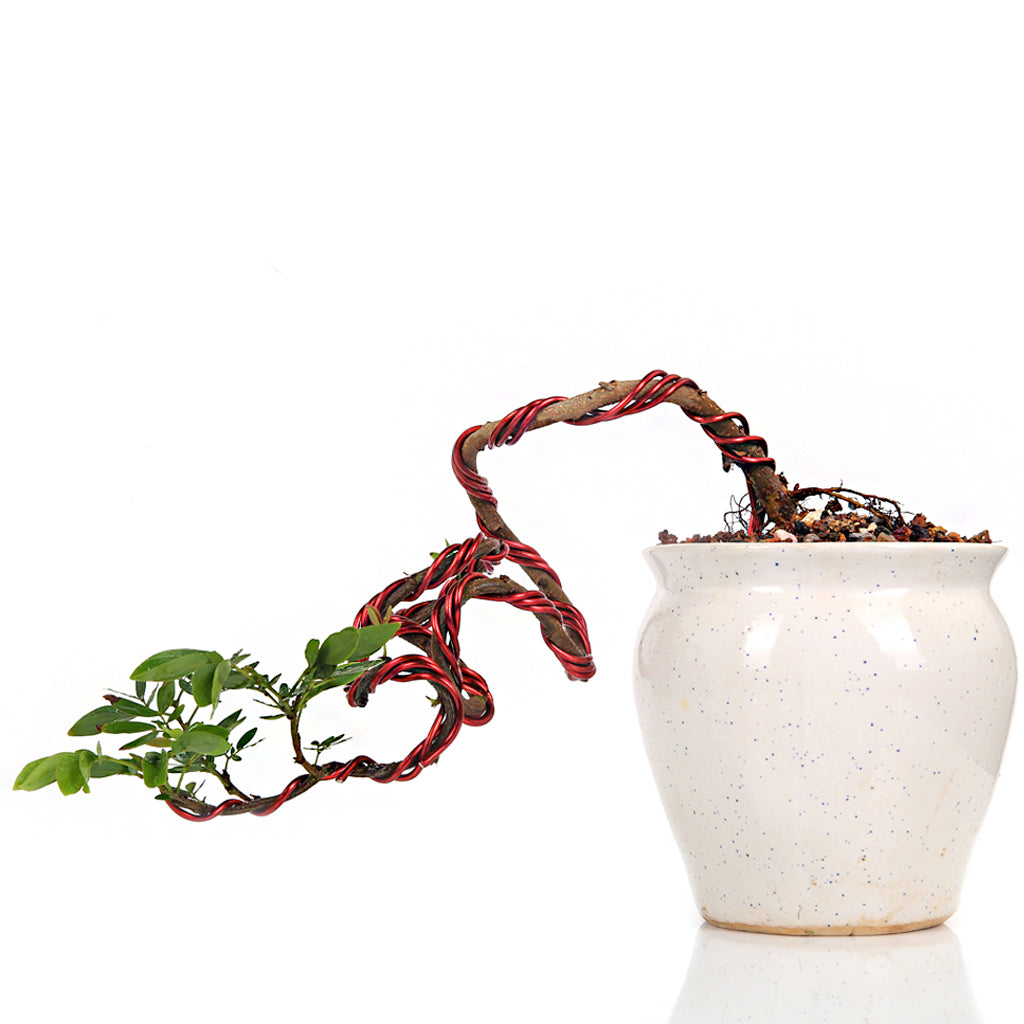
Bonsai Calliandra Surinamensis Powderpuff Tree Unique Twisted Style Bonsai Plant with Ceramic Pot
Guaranteed Safe Checkout
Green Paradise Offers Beautiful Bonsai
Calliandra Surianamensis Powderpuff
Twisted Style Bonsai Plant
About Calliandra Surianmensis Bonsai Plant
The Bonsai Calliandra surinamensis, also known as the Powderpuff Tree, is a popular choice among bonsai enthusiasts due to its unique and attractive flowers.
Here's some information about this particular bonsai tree:
Tree Description:
-
Calliandra surinamensis is a small evergreen tree native to South America, particularly Suriname, Guyana, and Brazil.
-
It belongs to the Fabaceae family and can reach 10 to 15 feet (3 to 4.5 meters) in its natural habitat.
-
As a bonsai, it is typically maintained at a much smaller size, usually between 6 and 12 inches (15 to 30 centimeters) tall.
Leaves:
-
The Powderpuff Tree features delicate, fern-like foliage that adds an elegant touch to its overall appearance.
-
The leaves are composed of numerous small leaflets, giving them a feathery or pinnate appearance.
-
The leaf coloration is usually a vibrant shade of green.
Flowers:
-
One of the most captivating features of the Powderpuff Tree is its blossoms.
-
The tree produces stunning pompom-like flowers that resemble puffs of powder, hence the common name.
-
The flowers are typically pink or red, although there are also cultivars with white or yellow blooms.
-
These flowers can attract pollinators like butterflies and bees, enhancing the overall visual appeal of the tree.
Bonsai Care:
- The Bonsai Calliandra surinamensis requires proper care to thrive as a bonsai tree.
Here are some care guidelines:
Lighting:
-
Place your bonsai tree in a location that receives bright, indirect sunlight.
-
Please protect it from direct afternoon sun, as excessive heat and light can damage the delicate foliage.
Watering:
-
Regular and consistent watering is essential for the health of your bonsai.
-
Keep the soil slightly wettish but avoid waterlogging. insure proper drainage to help root spoilage.
Pruning and Shaping:
-
Regular pruning is necessary to maintain the desired shape and size of the bonsai.
-
Trim back new growth and shape the branches to achieve the desired bonsai style.
Fertilization:
-
Feed your bonsai with a balanced, slow-release fertilizer during the growing season.
-
This will give the necessary nutrients for healthy growth and vibrant flowers.
Repotting:
-
Repotting should be done every two to three years, preferably during the spring.
-
Use a well-draining bonsai soil mix to promote root health.
Bonsai Styling:
-
The Powderpuff Tree is well-suited for various bonsai styles, such as informal upright, cascade, or group planting.
-
Its delicate foliage and striking flowers make it an excellent choice for creating visually appealing bonsai compositions.
With proper care and attention, the Bonsai Calliandra surinamensis can reward bonsai enthusiasts with its charming foliage and show-stopping flowers. It is a beautiful addition to any bonsai collection, providing a touch of elegance and natural beauty.
How To Grow Bonsai Calliandra Surinamensis
Powderpuff Plant
Growing a bonsai Calliandra surinamensis, commonly known as the Powderpuff plant, requires patience, attention to detail, and specific care techniques.
Here's a step-by-step guide on how to grow a bonsai Calliandra surinamensis:
Obtain a healthy specimen:
-
Start by acquiring a young Calliandra surinamensis plant from a reputable nursery or bonsai supplier.
-
Choose a plant with a straight trunk and compact growth habit.
Select a suitable container:
-
Bonsai containers should have good drainage holes and be shallow, as the shallow root system of the Calliandra surinamensis doesn't require a deep container.
-
A rectangular or oval-shaped pot works well for this species.
Prepare the soil:
-
Use a well-draining soil mix specifically formulated for bonsai.
-
A blend of Akadama, pumice, and lava rock in equal parts is commonly used.
-
This mixture retains some moisture while offering adequate drainage.
Repotting:
-
If the purchased plant is already potted, check if it needs repotting.
-
Usually, repotting is done every two to three years.
-
Trim back a portion of the root mass and place the tree into the new bonsai pot, gently filling in the remaining space with the prepared soil mix.
Pruning and shaping:
-
Bonsai pruning and shaping are crucial for maintaining the desired miniature form.
-
Use sharp bonsai pruning shears to trim back long shoots and shape the tree.
-
Calliandra surinamensis has delicate leaves, so be cautious while pruning to avoid damaging them.
Wiring:
-
Wiring helps in shaping the branches and creating an appealing bonsai silhouette.
-
Wrap bonsai wire around the branches, applying gentle pressure to bend them into the desired position.
-
Avoid wrapping the wire too tightly to avoid damaging the bark.
Watering:
-
Calliandra surinamensis prefers slightly moist soil. Water the bonsai thoroughly when the top layer of soil feels slightly dry.
-
Ensure that excess water drains away, as waterlogging can lead to root rot.
-
Avoid letting the soil dry out completely, as this can harm the plant.
Light and temperature:
-
Place the bonsai in a bright location where it can receive ample indirect sunlight.
-
Calliandra surinamensis thrives in warm temperatures ranging from 60°F to 85°F (15°C to 29°C).
-
Protect the tree from frost and extreme temperature fluctuations.
Fertilization:
-
Apply a balanced liquid bonsai fertilizer during the growing season, typically from spring to early autumn.
-
Follow the instructions on the toxin packaging for the correct lozenge and frequence.
-
Adjust the fertilization regime based on the tree's response.
Pest control:
-
Monitor the bonsai regularly for pests such as aphids, spider mites, or scale insects.
-
If you notice any infestation, treat it promptly with an appropriate organic or chemical insecticide.
-
Be cautious when applying chemicals to avoid harming the plant.
Winter care:
-
Calliandra surinamensis is not frost-tolerant.
-
During winter, protect the bonsai by moving it indoors to a cool room with sufficient light or by providing frost protection, such as a greenhouse or frost cloth.
Patience and maintenance:
-
Bonsai cultivation requires patience and dedication.
-
Regularly check and maintain the tree's shape through pruning and wiring.
-
Monitor the soil moisture, fertilize appropriately, and take necessary steps to ensure the overall health and vitality of the plant.
Remember, growing a bonsai is an ongoing process that requires continuous care and observation. Enjoy the journey of nurturing and shaping your bonsai Calliandra surinamensis into a beautiful miniature tree.

